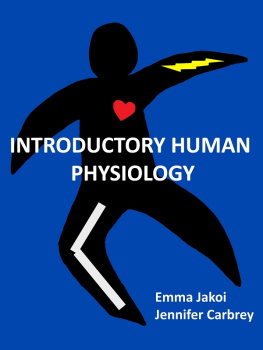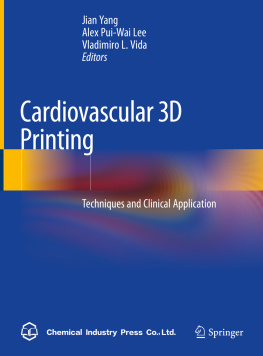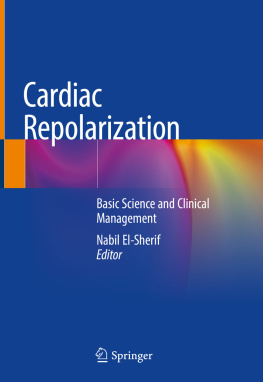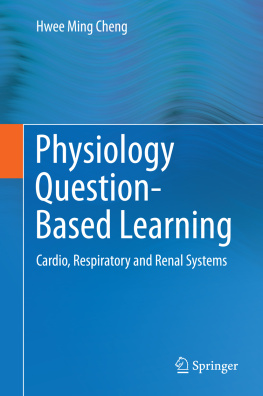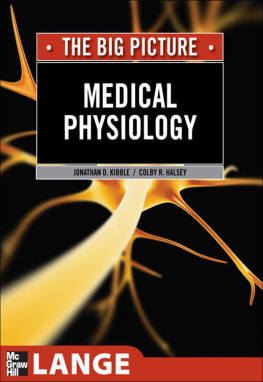

Notion Press
Old No. 38, New No. 6
McNichols Road, Chetpet
Chennai - 600 031
First Published by Notion Press 2019
Copyright Sarvesh Malaki, John Pramod and Lydia Abraham 2019
All Rights Reserved.
eISBN 978-1-64546-557-7
This book has been published with all efforts taken to make the material error-free after the consent of the authors. However, the authors and the publisher do not assume and hereby disclaim any liability to any party for any loss, damage, or disruption caused by errors or omissions, whether such errors or omissions result from negligence, accident, or any other cause.
While every effort has been made to avoid any mistake or omission, this publication is being sold on the condition and understanding that neither the authors nor the publishers or printers would be liable in any manner to any person by reason of any mistake or omission in this publication or for any action taken or omitted to be taken or advice rendered or accepted on the basis of this work. For any defect in printing or binding the publishers will be liable only to replace the defective copy by another copy of this work then available.
Foreword

Cardiovascular disease remains a major global problem. The science of cardiovascular medicine has progressed rapidly in the 21 st century. No medical specialty moves faster than contemporary cardiovascular medicine. Medical students and busy clinicians find it difficult to keep apace learning and applying the rapid advances and ever-increasing palette of diagnostic and management strategies available today. Therefore, the basic understanding of cardiovascular physiology is essential for the same.
The book Cardiovascular physiology: The Bigger Picture authored by Mr. Sarvesh Malaki, Dr. John Pramod and Dr. Lydia Abraham provides a condensed and palatable yet comprehensive update of major physiological principles of cardiovascular medicine of practical importance to the undergraduate and postgraduate medical students, cardiovascular specialists, internists, primary health care physicians and practitioners of non-medical specialties in their daily clinical work.
Visual imagery and concise take home messages provide a very effective teaching and learning tool. By focusing on images, graphical representations of essential data, and highly distilled textual material, this book aims to provide a convenient and practical tool to help medical students and clinicians to master the key aspects of cardiovascular physiology.
The authors and editors have designed this book to serve as a ready reference to understand the physiological principles of the most important and common cardiovascular problems confronted by the medical students and physicians in practice, as well as background source for easy perusal during spare moments.
Dr. Rajneesh Calton,
MD, DM, DNB, FICC, FCSI, FACC, FSCAI
Professor and Head
Department of Cardiology
Christian Medical College and Hospital
Ludhiana (Punjab) 141008 INDIA
E-mail:
Acknowledgments
To Jesus Christ, whose MERCIES & GRACE that enabled the manifestation of this idea.
To my family, for supporting and guiding me in this journey.
To Dr. Charles W. Oslon (Founder ecgtech.net), for inspiring me in Electrocardiographic research.
To Mr. Gurpreet Singh (Door2web.com), for spending sleepless nights in designing the intext diagrams.
To professional academic editors at Editage Publication Services, for their expert editorial work.
To my friends, for their all round support.
To 25, the future which influenced my present like no other.
To Dr. Gagandeep Kwatra, Dr. Naveen Kakkar, Dr. Rinchu Loomba, for always believing in me.
To all others, who were part of this directly or indirectly, all the prayers, blessings and good wishes culminated into infusing life to this project.
Sarvesh Malaki
The Cardiovascular System
The heart and the distensible blood vessels comprise a complex interactive system, the cardiovascular system, which ensures a constant supply of oxygenated blood to the tissues of the body. These components form a closed series loop in which the molecular energy of the heart is converted into mechanical energy, causing oxygen rich blood to be propelled through tube like vessels which are distributed throughout the body, before re-entering the heart and completing the circuit of flow. During its flow through permeable vessels known as capillaries, the blood delivers various critical products, such as nutrients and essential gases, to the cells of the body by processes including diffusion and bulk movement. The cardiovascular system is primarily concerned with the distribution of pressure and a coupling of the pumping action of the heart to the vasculature, ensuring a constant flow of blood to ensure sufficient blood supply to the cells of the body.
The integrated idea of the cardiovascular circuitry can be compared to an electrical one (): the energy required by the bulb to illuminate is analogous to the energy requirements of cells which allows them to function, the heat produced in the bulb represents the resistive drop in pressure of flowing blood which is dissipated as heat, the current flowing is comparable to the volume of blood flowing to a particular site, and the AC source of electrical potential corresponds to the hearts pulsatile pumping. This model forms a basis which will be built upon further throughout this book.

Figure 1 The cardiovascular system consists of a pump (heart) which propels oxygen and nutrient rich blood into the vasculature, to adequately supply the tissues. The entire circuit can be compared to an electrical one, where an AC source of voltage provides sufficient electrical energy to adequately light a bulb.
There are various organ beds in the body, each having different metabolic requirements and varying oxygen demands both at rest and under challenge. The current of blood which can flow through each organ is governed by the resistance to flow in the tube like vessels inside each vascular bed ().
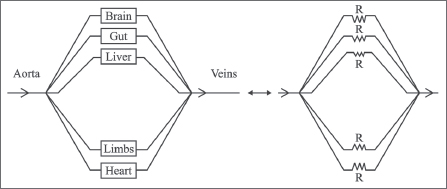
Figure 2 Arrangement of various organ beds across the heart are analogous to electrical resistors placed in parallel across a potential gradient (R = resistance).
There are five main types of blood vessel within the body: arteries, arterioles, capillaries, venules, and veins. As an artery enters a vascular bed it breaks into numerous arterioles which run in parallel to each other and function as gatekeepers to blood flow for a vascular bed. The arterioles then branch further into numerous capillaries, which serve as the sites of product exchange between blood and cells. Branching of an artery into an arterial tree increases the relative surface area, maximizing the efficiency of product exchange between blood and cells ().

Figure 3 The dividing of major arteries into smaller, finer branches on entering a particular organ bed can be compared to a parallel in series organisation of electrical resistances across a voltage source as described above (R = resistance).
Next page


